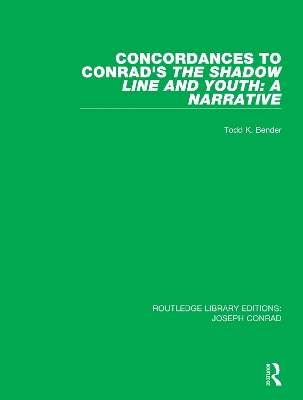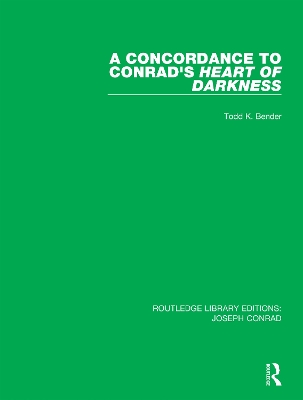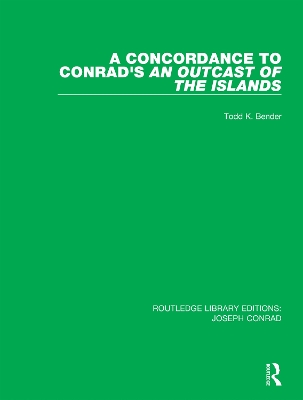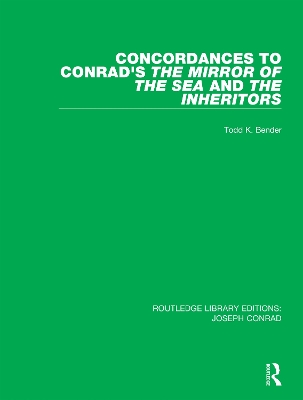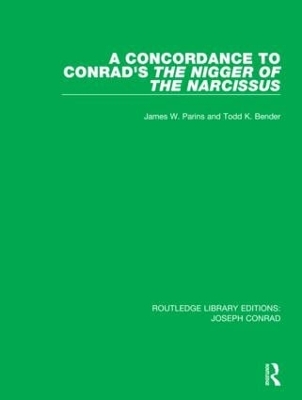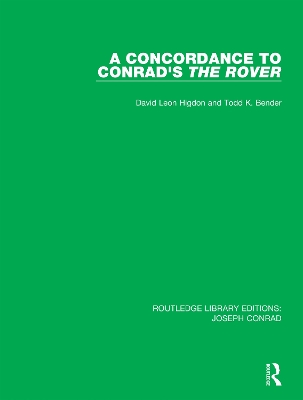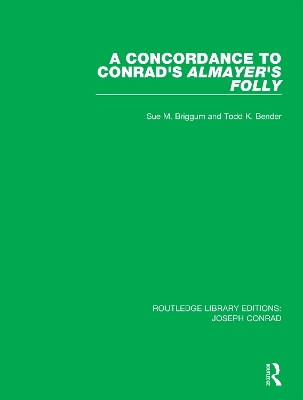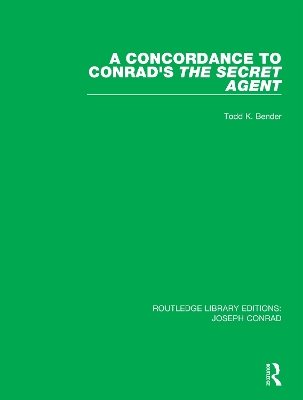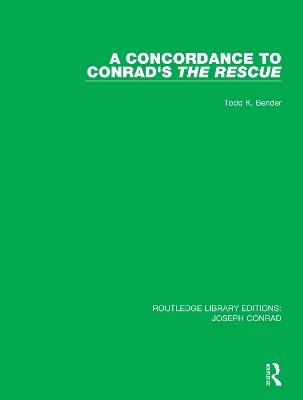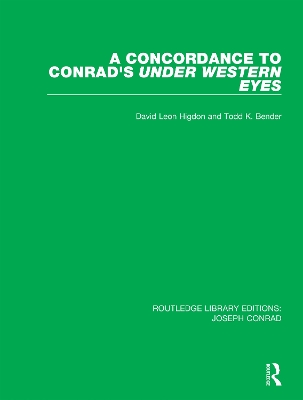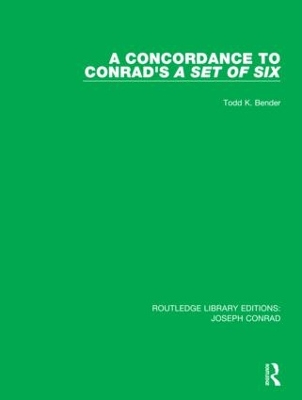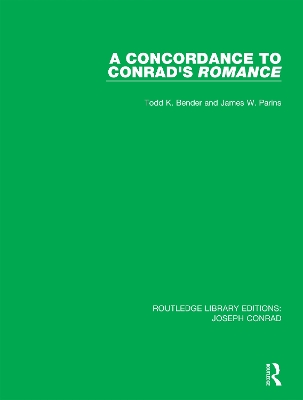Routledge Library Editions: Joseph Conrad
17 total works
Concordances to Conrad's The Shadow Line and Youth: A Narrative
by Todd K. Bender
Originally published in 1984, this volume falls in to three parts: the verbal index, the word frequency table, and the field reference. The user can look to the alphabetical listing in the word frequency table to see how many times a word occurs in the text of An Outcast of the Islands. Then turning to the verbal index they can see the page number and line at which each occurrence falls. Then turning to the field of reference they can look at the actual context of each word in the text.
Concordances to Conrad's The Mirror of the Sea and, The Inheritors
by Todd K. Bender
Concordances to Conrad's Tales of Unrest and Tales of Hearsay
by Todd K. Bender
Originally published in 1982, this volume follows others in the series. By looking at the word frequency table, the user will find how many times the word occurs in the work. The verbal index tells at what page and line number the word occurs. By looking at the field of reference, the reader can see the word in its full context. This volume is part of a series which produced verbal indexes, concordances, and related data for all of Conrad’s works.
A Concordance to Conrad's The Nigger of the Narcissus
by James W. Parins and Todd K. Bender
Originally published in 1981, this volume tabulates the vocabulary of one of Conrad’s most interesting works. This volume contains a complete verbal index to the text, a table of word frequencies, and a field of reference allowing the user to locate the context of each word cited. This volume is part of a series which produced verbal indexes, concordances, and related data for all of Conrad’s works.
This book is a re-issue pertaining to a title originally published in 1897. The language used is a reflection of its era and no offence is meant by the Publishers to any reader by this re-publication.
A Concordance to Conrad's Almayer's Folly
by Sue M. Briggum and Todd K. Bender
A Concordance to Conrad's Nostromo
by James W. Parins, Robert J. Dilligan, and Todd K. Bender
Originally published in 1979, this concordance consists of a Verbal Index listing the location of all words used by Conrad, a Word Frequency Table listing number occurrences for each word in his text, and a Field of Reference in which the user can locate in its context a word cited in the Verbal Index. This volume is part of a series which produced verbal indexes, concordances, and related data for all of Conrad’s works.
A Concordance to Conrad's The Arrow of Gold
by Paul L. Gaston and Todd K. Bender
Concordances to Conrad's Typhoon and Other Stories and Within the Tides
by Todd K. Bender and Kirsten A. Bender
Originally published in 1982, this title supplies a complete verbal index, listing all the words in the texts with their locations, a word frequency table, and a field of reference which establishes a page/line reference system for locating each context. The user will look first in the word frequency table to see whether or not the word in question occurs in these works. Then they will turn to the verbal index to find the line and page on which it occurs, and finally, turning to the location in the field of reference, they will find the context for their word.
Originally published in 1985, this concordance lists all the words in the text indexed, along with the locations of their appearance in the Field of Reference. The Verbal Index lists the location of the context of each word in the Field of Reference. There is also a table listing alphabetically all words employed in the text and giving their frequency of occurrence. This volume is part of a series which produced verbal indexes, concordances, and related data for all of Conrad's works.
A Concordance to Conrad's Under Western Eyes
by David Leon Higdon and Todd K. Bender
Originally published in 1983, this volume follows others in the series. The user is provided with a Verbal Index, citing each type and its location, a Word Frequency Table, and a Field of Reference. This volume is part of a series which produced verbal indexes, concordances, and related data for all of Conrad’s works.
A Concordance to Conrad's Victory
by James W. Parins, Robert J. Dilligan, and Todd K. Bender
Originally published in 1979, The Concordance to Conrad’s Victory is intended to provide access to certain information on the text of the novel in a manner convenient to Conrad scholars. To this end the authors have included an alphabetical list of word frequencies and a type/token ratio table as well as a list of word frequencies in rank order. In the concordance itself, each specific word in the text is listed in alphabetical order along with an identifier number and a context for the word. This volume is part of a series which produced verbal indexes, concordances, and related data for all of Conrad’s works.
Originally published in 1981, this concordance to A Set of Six will assist readers in understanding the vocabulary of a group of stories of considerable artistic merit and also of importance to our grasp of Conrad’s total works. It is particularly important, however, that this volume of tables be available to the serious scholar of Conrad, because it provides a basis for comparison of his various short works. This volume gives a verbal index, listing all the words used by Conrad in A Set of Six with the page and line number in which the word occurs. The user turns from the verbal index to the field of reference to see the word in its full context. This volume is part of a series which produced verbal indexes, concordances, and related data for all of Conrad’s works.
Originally published in 1985, this volume follows others in the series. An alphabetical frequency table lists all the words indexed with the frequency of their appearance in the field of reference. There is also a table arranged by descending frequency. The verbal index lists the location of the context of each word in the field of reference. This volume is part of a series which produced verbal indexes, concordances, and related data for all of Conrad's works.
